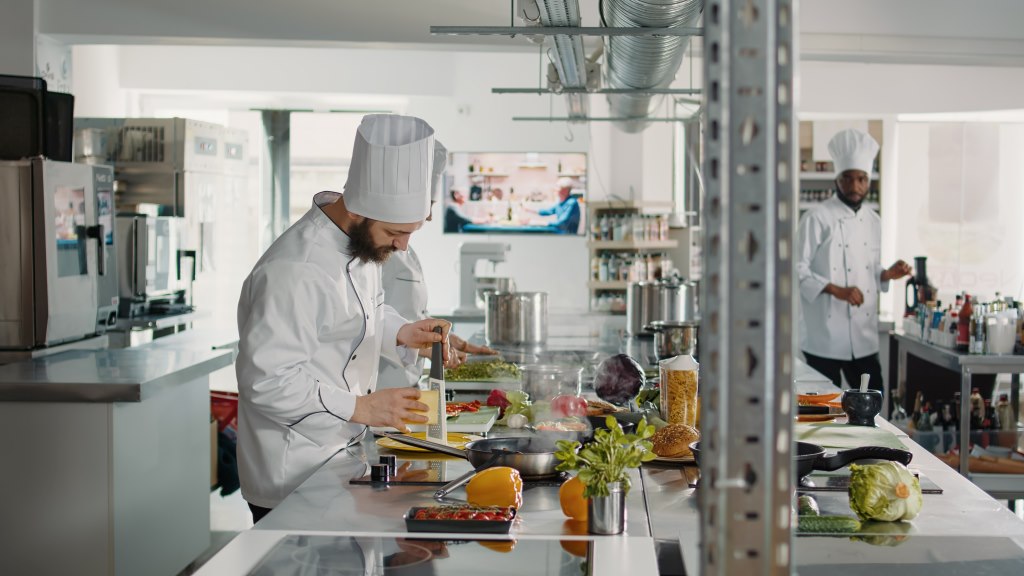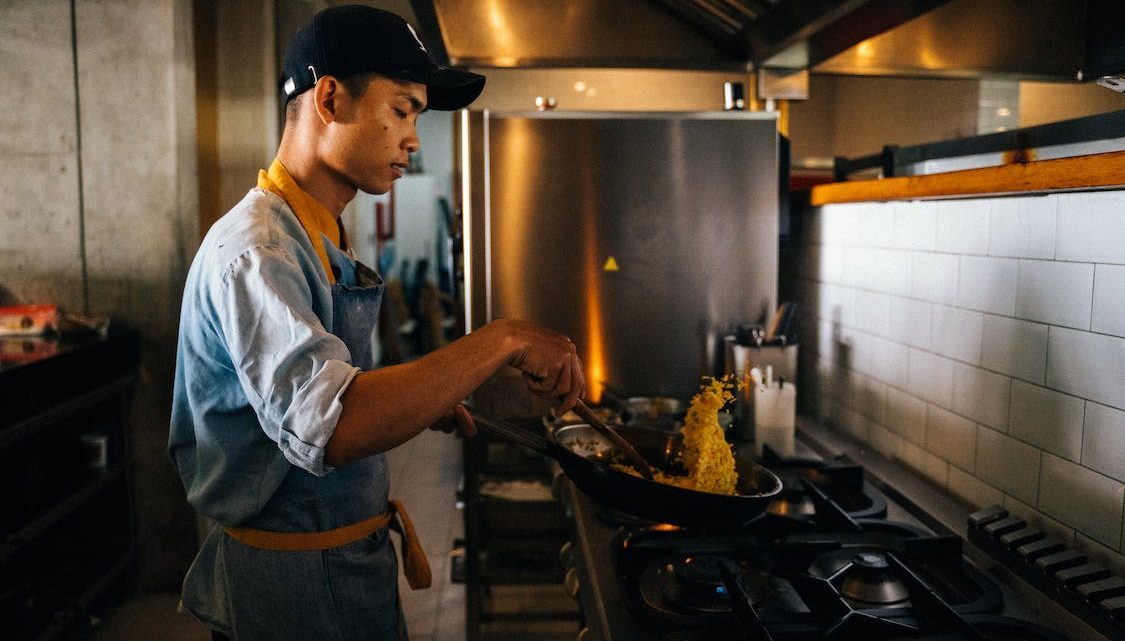
Green Gastronomy: How Shared Commercial Kitchens Embrace Eco-Friendly Materials
In the ever-evolving panorama of the meals industry, shared commercial kitchens have emerged as a modern solution for culinary marketers. Beyond offering a space for culinary innovation, these kitchens are increasingly adopting eco-friendly practices, with specific attention to sustainable substances.
This article explores how shared industrial kitchens are embracing inexperienced gastronomy by incorporating environmentally aware substances into their operations.
The Rise of Shared Commercial Kitchens
Shared commercial kitchens, additionally referred to as commissary kitchens or ghost kitchens, have become a lifeline for meal groups starting from startups to mounted cooks.
These shared cooking spaces provide cost-effective options to conventional brick-and-mortar institutions, permitting culinary entrepreneurs to be conscious of creating superb dishes without the weight of hefty overhead expenses.

Key Features of Shared Commercial Kitchens
Shared commercial kitchens offer cost-efficient solutions by eliminating the need for individual kitchen spaces, equipment, and staff, enabling culinary entrepreneurs to focus on their craft without the burden of high overhead costs.
These spaces promote flexibility, allowing entrepreneurs to rent sustainable kitchen space as needed, and fostering a collaborative environment that encourages networking and innovation within the culinary community.
- Cost Efficiency: Shared kitchens offer price-efficient solutions by using doing away with the want for individual kitchen spaces.
- Flexibility: Entrepreneurs can hire kitchen areas as wanted, promoting flexibility in production and accommodating fluctuating demand.
- Networking Opportunities: Shared kitchens foster collaborative surroundings, enabling meals companies to attach, share ideas, and potentially collaborate on new culinary ventures.
- The Green Revolution in Culinary Spaces: As environmental concerns become more and more prominent, the food industry is under pressure to adopt sustainable practices. Shared industrial kitchens are at the vanguard of this motion, incorporating green materials and practices into their daily operations.
Eco-Friendly Materials in Shared Kitchens
In the pursuit of sustainable practices, shared kitchens are incorporating eco-friendly materials to decrease environmental effects.
Utilizing recycled stainless-steel countertops and bamboo-reducing boards not simplest aligns with green ideas but additionally affords durable and realistic options for culinary operations in these communal areas.
1. Recycled Stainless Steel Countertops
- Utilizing countertops crafted from recycled stainless steel reduces the call for brand-new raw substances and minimizes the environmental effects.
- Stainless metallic is long-lasting, and smooth to smooth, making it a sustainable and realistic preference for shared kitchen areas.
2. Bamboo Cutting Boards
Bamboo is a hastily renewable useful resource that grows a whole lot faster than conventional hardwoods. These are lightweight, long-lasting, and antimicrobial, supplying a sustainable alternative to standard-reducing surfaces.
3. Biodegradable Packaging Materials:
Shared kitchens are encouraging tenants to use biodegradable and compostable packaging materials. These materials along with cornstarch-based plastics and sugarcane pulp offer a greener alternative to traditional packaging.
4. Energy-Efficient Appliances:
Shared kitchens are investing in power-green home equipment to reduce electricity intake. Energy Star-rated system, together with ovens, fridges, and dishwashers, helps lower strength costs and minimizes the carbon footprint of culinary operations.
5. The Impact on Culinary Entrepreneurs:
Embracing eco-friendly substances isn’t always handiest useful for the environment but additionally holds numerous advantages for culinary marketers operating inside shared kitchens.

Entrepreneurial Benefits
Embracing eco-friendly substances within shared business kitchens interprets into lengthy-term cost savings for culinary entrepreneurs, as those materials are frequently long-lasting and require much less frequent substitutes.
Moreover, committing to sustainability serves as a market differentiator, attracting environmentally conscious clients and improving the overall logo attraction of businesses operating within shared kitchen areas.
1. Cost Savings:
Eco-pleasant substances often contribute to long-term cost financial savings as they may be durable and require less frequent replacement. Energy-green home equipment can substantially lessen application payments, undoubtedly impacting the bottom line of culinary ventures.
2. Market Differentiation:
Culinary companies operating in shared kitchens can use their commitment to sustainability as a completely unique promoting factor. However, Consumer possibilities are moving towards eco-conscious brands, and highlighting inexperienced practices can attract environmentally-conscious clients.
3. Community Engagement:
Shared kitchens foster a feeling of community among culinary entrepreneurs, and a shared dedication to green practices strengthens this bond. Moreover, Collaborative efforts closer to sustainability create a high-quality surroundings and make a contribution to the collective social obligation of the culinary community.
Challenges and Solutions
While the adoption of green materials in shared business kitchens is commendable, it is not without its demanding situations. Overcoming these limitations requires an aggregate of innovation, collaboration, and commitment.
Challenges:
1. Initial Costs: The in-advance prices of buying eco-friendly appliances and materials may be better than conventional alternatives. Overcoming this undertaking may require economic incentives or government assistance for groups embracing sustainable practices.
2. Limited Availability: Some green substances may have confined availability in comparison to standard alternatives. Encouraging producers to make bigger their production of sustainable substances can assist cope with this trouble.
Solutions
1. Financial Incentives: Governments and neighborhood governments can provide financial incentives, tax breaks, or grants to businesses adopting eco-friendly practices. This can help offset the initial fees and inspire a much wider adoption of sustainable materials.
2. Supplier Collaboration: Shared kitchens can collaborate with providers to supply a wide range of eco-friendly materials. Encouraging a shift towards sustainable sourcing practices in the delivery chain blessings both the shared commercial kitchens and their suppliers.

Future Trends and Innovations
As the shared industrial kitchen enterprise continues to evolve, destiny developments and improvements are likely to shape the panorama of inexperienced gastronomy.
Anticipated Trends
1. Smart Kitchen Technologies: Integration of smart technologies in shared kitchens can optimize power utilization and reduce waste. Smart home equipment with sensors and automation can enhance performance and sustainability.
2. Circular Economy Initiatives: Shared kitchens may additionally participate in circular financial system tasks, emphasizing the reuse and recycling of materials. By ultimate the loop on waste, culinary marketers can make a contribution to an extra sustainable food atmosphere.
Conclusion
Shared industrial kitchens aren’t just transforming the culinary landscape; they may be leading the price toward a more sustainable and eco-friendly future. By embracing recycled materials, power-efficient home equipment, and collaborative answers, those kitchens are setting a precedent for the complete meals enterprise. As culinary marketers continue to prioritize sustainability, shared kitchens will play a critical role in shaping the future of green gastronomy.



